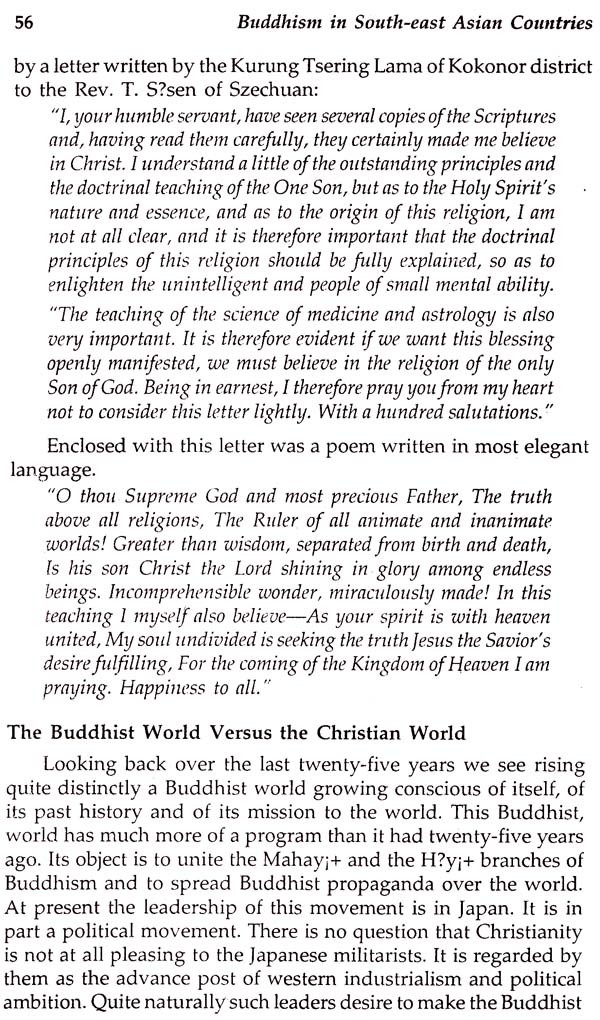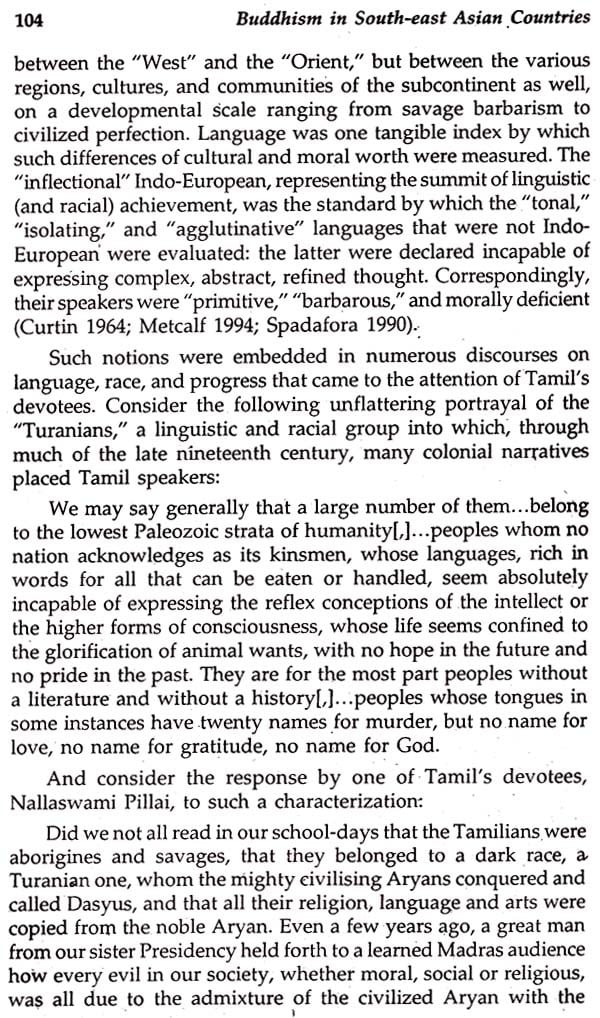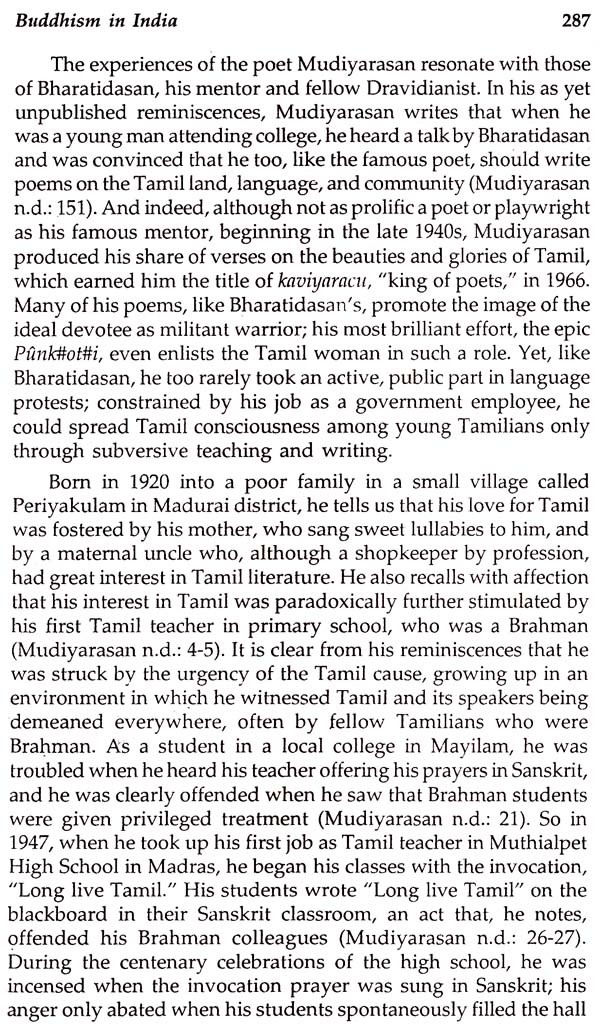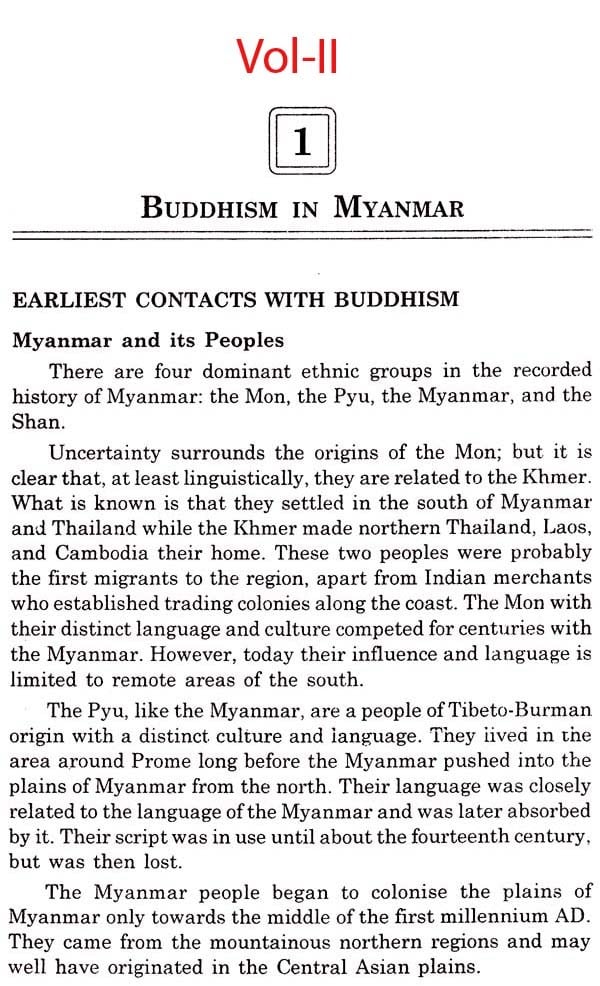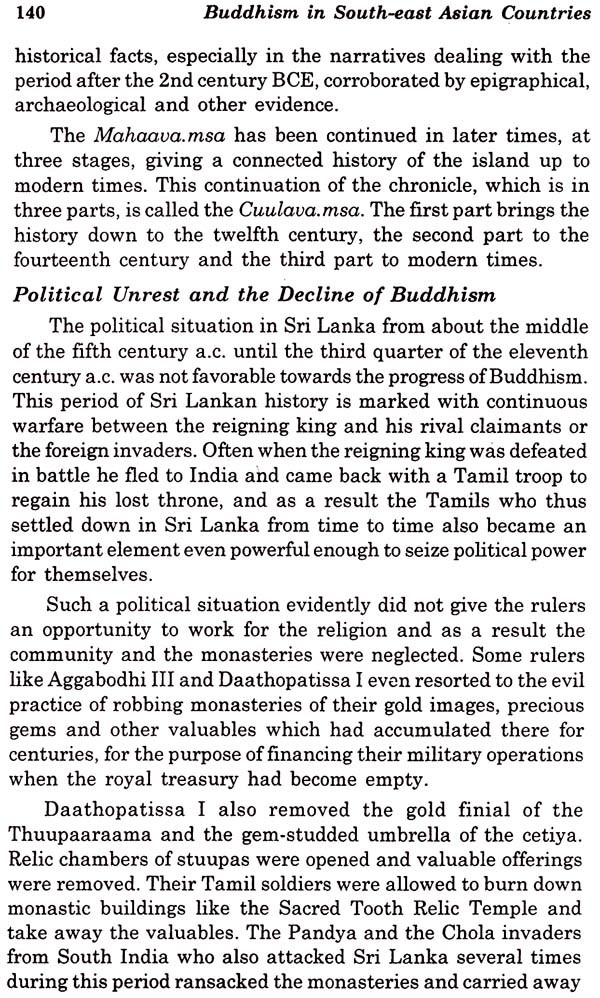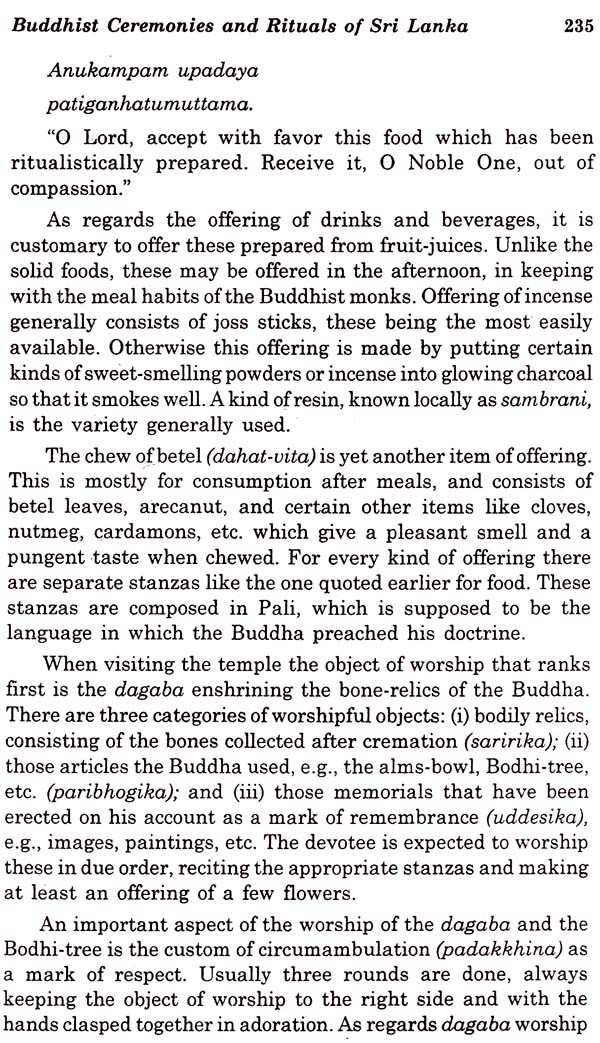
Buddhism in South-East Asian Countries (Set of 2 Volumes)
Book Specification
| Item Code: | UAR617 |
| Author: | Indra Narayan Singh |
| Publisher: | Prashant Publishing House, Delhi |
| Language: | English |
| Edition: | 2009 |
| ISBN: | 9788190828253 |
| Pages: | 648 |
| Cover: | HARDCOVER |
| Other Details | 9.00 X 6.00 inch |
| Weight | 1.05 kg |
Book Description
In the early centuries of the Common Era, the people in different parts of Southeast Asia came to know of Buddhism as a result of increased contact with the Indian merchants who had come to the region to trade. These merchants not only established trading stations in Southeast Asia, but also brought their religions and cultures with them. Under their influence, the local people began to practise a mixture of Buddhism and Hinduism, while retaining at the same time many of their old beliefs and customs.
The present book discusses in detail about the varied aspects of Buddhism in Southeast Asian countries with vivid explanation.
Dr. Indra Narayan Singh, a Senior Lecturer in the Department of Buddhist Studies Delhi University Since 1996, obtained his Doctorate on A Study of Universal Flux in Theravada Buddhism.
Dr. Singh has published a number of articles and is a regular contributor to various journals and magazines of national and international repute. He has also edited the journals of Buddhist Studies.
Major world religion and philosophy founded in north eastern India in the 5th century BC Based on the teachings of Siddhartha Gautama, called the Buddha, Buddhism takes as its goal the escape from suffering and from the cycle of rebirth: the attainment of nirvana. It emphasizes meditation and the observance of certain moral precepts. The Buddha's teachings were transmitted orally by his disciples; during his lifetime he established the Buddhist monastic order (sangha). He adopted some ideas from the Hinduism of his time, notably the doctrine of karma, but also rejected many of its doctrines and all of its gods. In India, the emperor Ashoka promoted Buddhism during the 3rd century BC, but it declined in succeeding centuries and was nearly extinct there by the 13th century.
It spread south and flourished in Sri Lanka and Southeast Asia, and it moved through Central Asia and China (including Tibet), Korea, and Japan. In the 19th century, Buddhism spread to Europe and the United States, and it became increasingly popular in the West in the second half of the 20th century. Buddhism's main teachings are summarized in the Four Noble Truths, of which the fourth is the Eightfold Path. Buddhism's two major branches, Mahayana and Theravada, have developed distinctive practices and unique collections of canonical texts. In the early 21st century, the various traditions of Buddhism together had more than 375 million followers.
**Contents and Sample Pages**





